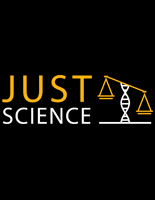Drug analysis
Real-Time Crime Forecasting Challenge Webinar
This webinar will offer a brief overview of the National Institute of Justice and the data science needs of the criminal justice field. In addition, it will provide details about the Crime Forecasting Challenge, including who can submit, how to retrieve datasets, and the submission categories. The overall goal of the Crime Forecasting Challenge is to harness recent advances in data science to drive innovation in algorithms that advance place-based crime forecasting.
See the YouTube Terms of Service and Google Privacy Policy
Rapid and Reliable On-Site Drug Detection Using Aptamer-based Sensors
Improving the Reliability of Drug Tests Done by Officers
Identifying New Illicit Drugs and Sounding the Alarm in Real Time
Use of Gas Chromatography with Tandem Ultra Violet and Mass Spectrometric Detection for the Analysis of Emerging Drugs. Application to Synthetic Cathinones and Fentanyl Analogues
Forensic Chemistry of Substituted 1-Alkyl-3-Acylindoles: Isomeric Synthetic Cannabinoids
Forensic Toxicological Screening/Confirmation of 500+ Designer Drugs by LC-QTOF-MS and LC-QqQ-MS Analysis
Spreading the Word on Novel Drugs
Changing the Behavior of Drug-Involved Offenders: Supervision That Works
A small number of those who commit crimes are heavily involved in drugs commit a large portion of the crime in this country. An evaluation of a "smart supervision" effort in Hawaii that uses swift and certain sanctioning showed that individuals committing crimes who are heavily involved in drug use can indeed change their behavior when the supervision is properly implemented.
See the YouTube Terms of Service and Google Privacy Policy
Research and Evaluation on Drugs and Crime, FY 2017 Solicitation Webinar
This webinar will provide details and guidance for potential applicants to the National Institute of Justice's Research and Evaluation of Drugs and Crime FY 2017 solicitation. The presenters will discuss the purpose and goals of this funding opportunity and address frequently asked questions. A Q&A session will conclude this webinar.
See the YouTube Terms of Service and Google Privacy Policy


